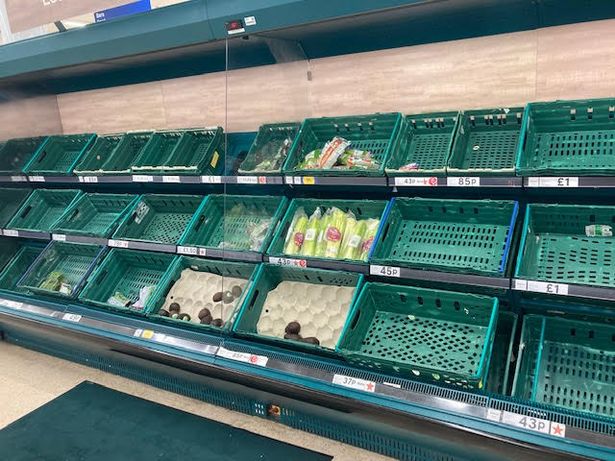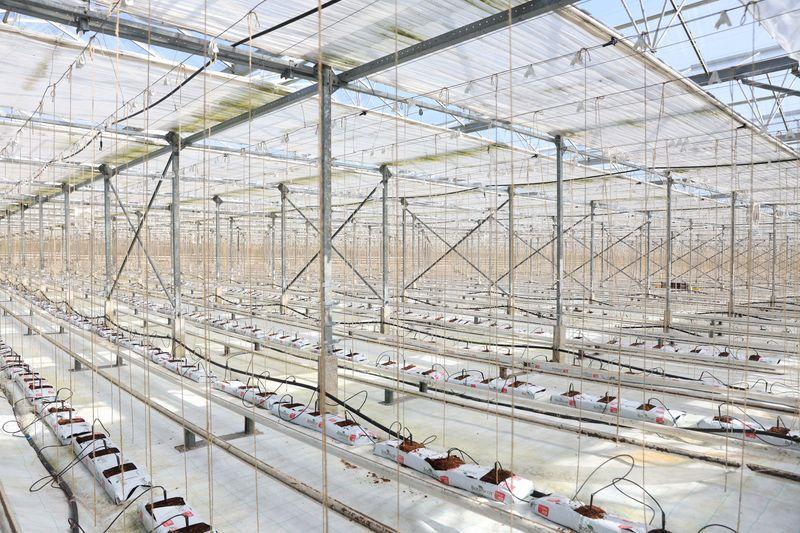Background: Cucumbers have a special place in my family’s shopping basket, and I would nearly go as far as to say have a special place in my family’s hearts. Now, this might sound a tad dramatic to some but let me set the scene. My mother is Estonian aka my mother cannot go a day without half a salted cucumber or gherkins with a side of dinner. Therefore, the recent disappearance of cucumbers from all the supermarkets within a 25km radius of our house became a daily talking point.

Being a good daughter who spends her days living, breathing and eating food systems, I wanted to get to the bottom of this cucumber crisis.
So, is there someone in the locality that is setting up some pickling business and buying up all available cucumbers (which would not be something completely out of the ordinary for the north Clare region) or is there something larger a foot?
Like most other empty basket items of the supermarkets, there is indeed something larger a foot. But what? You guessed correctly. The phrase of 2022- “supply chain issues”. More precisely soaring costs facing producers.
Unfortunately, my mother’s cucumbers are facing surging energy costs and labour shortages. The vast majority of cucumbers appear to either be produced in heated greenhouses in areas with inclement weather conditions, in non-heated greenhouses in countries such as Morocco and Spain but face rising transport costs, or in fields in countries such as the largest global producer of cucumbers, China (Atlas Big, 2022).
Closer to home, greenhouses in England stand empty due to the rising cost of energy preventing the viable use of natural gas to supply the artificial heat needed to grow cucumbers for the British market. While last year it cost approximately 25 pence to produce a cucumber in Britain, it is now set to hit 70 pence.

Some of the rising costs incurred by producers include the soaring price of natural gas therms from 40 pence per therm at the start of 2022 to rising as high as £8 in some cases as Russia’s invasion of Ukraine worsened market pressure (Checkout, 2022).
Fertiliser prices have also tripled in comparison to last years prices, while the cost of carbon dioxide which is needed to facilitate growing and packaging processes has also risen (World Bank, 2022).
To make matters worse, labour shortages in the food harvesting sector have worsened after Brexit halted free movement from Europe. A large proportion of last year’s seasonal workers that arrived in Britain came from Ukraine and the ongoing conflict has prevented many of the expected works from returning this year (Financial Times, 2022).
As a result, The Lea Valley Growers Association, whose members produce about three-quarters of Britain’s cucumber and sweet pepper crop, said about 90% did not plant in January, while half have still not planted and will not plant if gas prices remain high. Instead, growers have used their savings to get through this (lack of) growing season in the hopes of policy and political improvement and growers that decided to plant this year’s crop risk making a loss. However, there is a risk of long-term shrinkage in the salads sector, which unlike other types of farming does not receive government subsidies.
The National Farmers’ Union warns that UK production of cucumbers could fall from 80 million to 35 million this year, with peppers down from 100 million last year to 50 million. There are also mounting concerns for similar decreases in yields in British tomato and aubergines (Checkout, 2022).
However, this scenario is not unique to the British growers and producers. In the Netherlands, their efficient greenhouses may be the world’s second largest food exporter but is facing one of the greatest crises the horticultural sector has ever witnessed with four out of ten Dutch growers in dire financial straits (Urban Ag News, 2022). Once again this is attributed to the skyrocketing energy prices and labour shortages, as well as the increasing prices of raw materials, the uncertainly along transport and trade routes due to the Ukrainian war.
In the Dutch context, the sector first ran into trouble when energy prices first spiked last autumn. Growers harvested crops earlier and left the greenhouses empty for a longer period of time, with some leaving the empty for this year or selling their greenhouses to ornamental plant growers. Last winter, approximately half of the usual tomato volumes were grown under lights either due to empty greenhouses or the economical unviability of the process. Cucumber production, now a supermarket year-round staple, also declined significantly.
Bottomline is – yes, my mother will be lucky to see cucumber at its price “pre-disappearance” if she does get to purchase one at all. There are multiple follow-up arguments and debacles that one could have from this point onwards mainly in relation to “who pays” and unfortunately “who will not be able to afford the likes of a cucumber”.
To conclude, I now have an answer for the cucumber mystery and so do you!
References:
Atlas Big (2022). https://www.atlasbig.com/en-ie/countries-by-cucumber-production
Checkout (2022). Cucumber Crisis: Surging Energy Prices Leave British Glasshouses Empty https://www.checkout.ie/fresh-produce/cucumber-crisis-surging-energy-prices-leave-british-glasshouses-empty-168769
Financial Times (2022). UK cucumber and pepper crops face energy and labour crunch. https://www.ft.com/content/f2d7494d-429e-49e1-aa37-97dc9eb1ecbc
Urban Ag News (2022). Can The Dutch Vegetable Greenhouse Chain Bear The Increasing Costs? https://urbanagnews.com/blog/news/can-the-dutch-vegetable-greenhouse-chain-bear-the-increasing-costs/
World Bank (2022). Fertilizer prices expected to remain higher for longer. World Bank (2022). https://blogs.worldbank.org/opendata/fertilizer-prices-expected-remain-higher-longer#:~:text=Fertilizer%20prices%20have%20risen%20nearly,and%20export%20restrictions%20(China).
